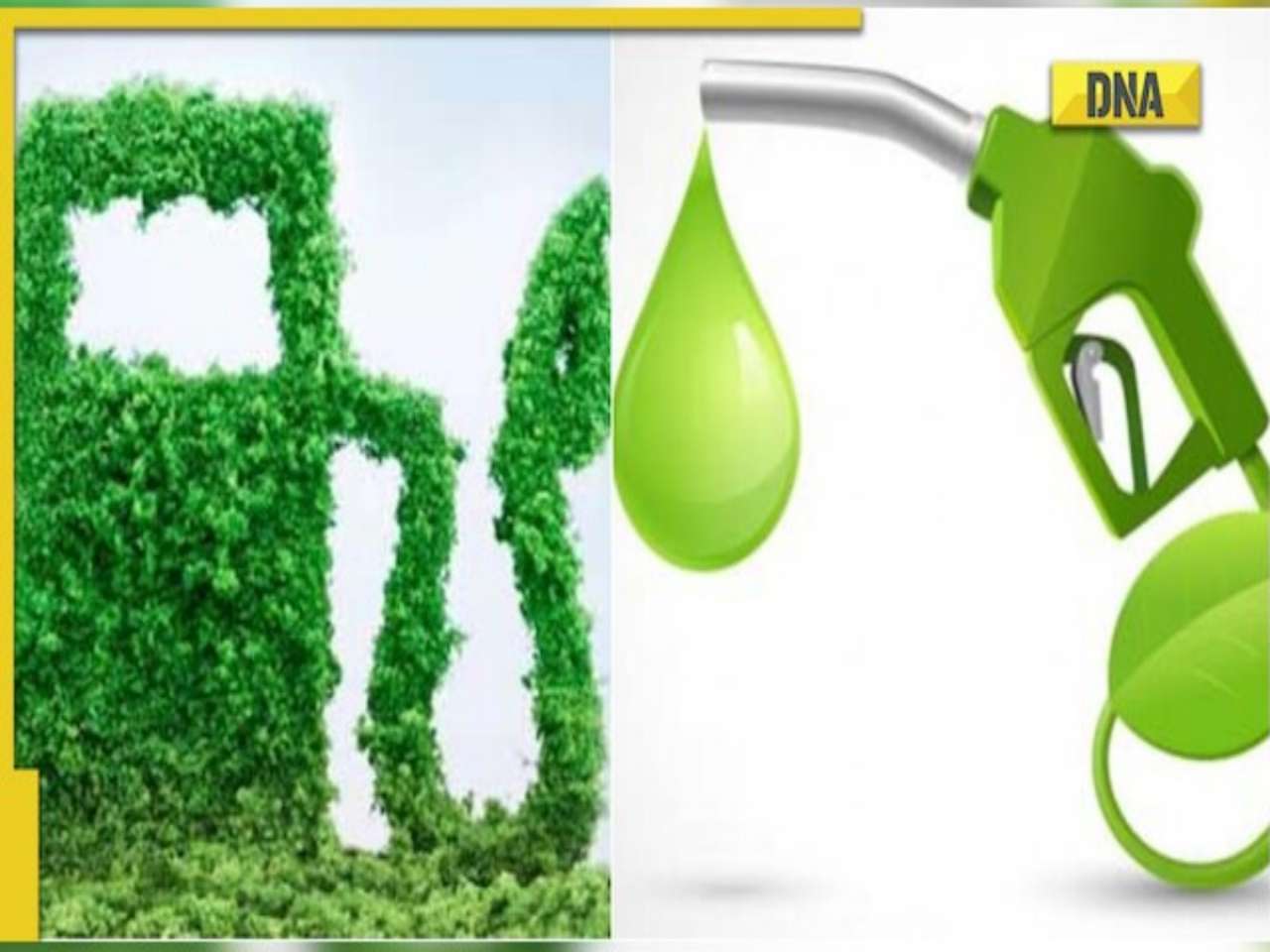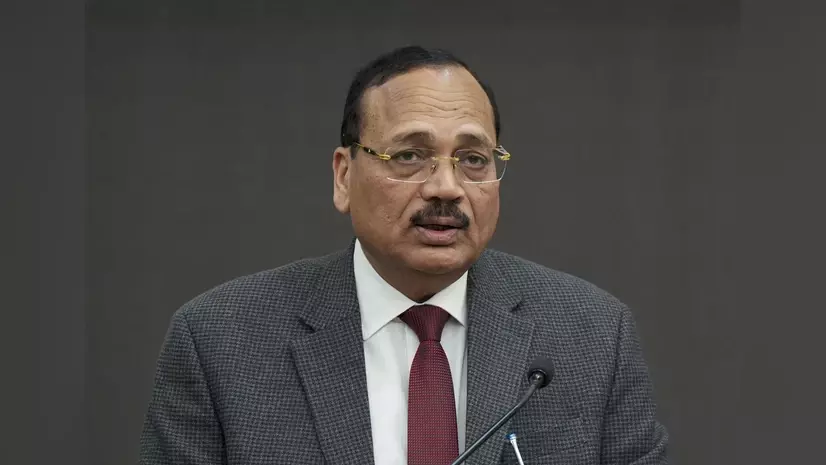Copyright dnaindia

The next time you fill petrol at your local pump, take a closer look at what's going into your vehicle's tank. It's not just petrol anymore—it's a blend of petrol and ethanol, and India has just reached a major milestone that will affect everyone from farmers in rural Maharashtra to auto-rickshaw drivers in Delhi, and from your family car to the nation's economy. India has achieved 20% ethanol blending in petrol, and it has done so five years ahead of schedule. This means that every litre of petrol you buy today contains 200 ml of ethanol—an alcohol made from crops like sugarcane, corn, and even rice—and 800 ml of regular petrol. It's a achievement that the government is celebrating, but it's also sparking heated debates across dining tables, farm fields, and automobile showrooms. So what exactly is ethanol blending, why is India pushing it so hard, and most importantly, how does it affect you? Understanding the Mix Ethanol blends easily with petrol because both are liquid fuels that mix naturally and burn together inside engines. Think of it like mixing milk with tea—they combine smoothly and work together. But ethanol isn't just a filler; it actually changes how the fuel burns. Ethanol is an alcohol produced from crops like sugarcane, corn, or rice, and when added to petrol, it helps the fuel burn more efficiently while producing fewer harmful gases like carbon monoxide and smoke. The secret lies in oxygen. Ethanol naturally contains oxygen in its chemical structure, which allows for better combustion inside your engine. When petrol burns alone, it sometimes burns incompletely, releasing harmful gases and unburned fuel particles that create pollution. With ethanol's added oxygen, the fuel burns more completely, resulting in less smoke, fewer pollutants, and cleaner air coming out of your exhaust pipe. In simple terms, ethanol-blended petrol is better for both engines and the environment—at least in theory. The Journey from 1.5% to 20% India's ethanol blending story is remarkable. Back in 2014, we were at a mere 1.5% ethanol blending—barely noticeable. Fast forward to 2025, and we've reached 20%, a jump that represents one of the fastest ethanol adoption rates in the world. This didn't happen by accident. It's part of India's National Policy on Biofuels, backed by strong government policies, financial incentives, and a clear vision. The government's push for ethanol blending serves three main purposes. First, it enhances our energy security. India imports more than 80% of its crude oil, spending lakhs of crores of rupees in foreign exchange every year. Every litre of ethanol we produce and blend means one less litre of petrol we need to import. Second, it's supposed to be better for the environment, reducing pollution and greenhouse gas emissions. Third, it creates a new market for farmers, especially those growing sugarcane, corn, and rice, giving them an additional source of income beyond just selling their produce as food. The numbers tell an impressive story. Ethanol production in India has skyrocketed from just 40 crore litres in 2013–14 to about 670 crore litres in 2023–24. The Central government claims it has paid ₹1.20 lakh crore to farmers since 2014–15 under the ethanol programme, creating a new revenue stream for the agricultural sector. About 9% of the total sugar produced in the country—not sugarcane, but processed sugar—now goes into making fuel instead of sweetening our tea. The Consumer's Dilemma But here's where the story gets complicated, especially if you own a vehicle. While ethanol-blended petrol sounds great on paper—cleaner air, less imported oil, farmer income—vehicle owners across India are not celebrating. In fact, many are quite upset. From April 2023, all new vehicles sold in India must come with E20 compatibility stickers, meaning they're designed to run on 20% ethanol-blended petrol. But what about the millions of older vehicles already on the road? A LocalCircles survey of 36,000 people revealed a striking finding: two out of every three petrol vehicle owners were against the E20 rule. Their complaints? Lower mileage and higher maintenance costs. The concerns are real. Ethanol has about 30% less energy content than petrol, which means your vehicle might travel fewer kilometers per litre. If your car previously gave you 15 kilometers per litre on pure petrol, with E20 fuel you might get around 13 to 14 kilometers per litre. For someone who drives daily, this adds up to a noticeable increase in fuel expenses over time. There's also the mechanical angle. Ethanol absorbs water from the air, and this water-ethanol mixture can cause corrosion in metal engine parts. Older rubber and plastic components in engines—fuel lines, gaskets, seals—were designed for pure petrol, not ethanol blends. When exposed to ethanol, these parts can deteriorate faster, leading to leaks, rust, and wear. Automakers like Hero MotoCorp have pointed out that newer materials such as special rubbers, elastomers—which are flexible, rubber-like materials—and ethanol-resistant plastics are needed to make engines truly compatible with E20 fuel. For owners of older vehicles, this could mean more frequent servicing, replacement of parts, and in some cases, difficulty starting the vehicle, especially in cold weather when ethanol can cause fuel line issues. The Union government has acknowledged that there is a slight decrease in fuel efficiency with ethanol-blended petrol but insists that better engine tuning—adjusting the engine's settings for smoother fuel flow and better combustion—can balance out this small loss. Yet many vehicle owners remain skeptical based on their real-world experience. Even NITI Aayog, the government's own policy think tank, has suggested giving tax benefits on E10 and E20 fuels to compensate consumers for the drop in fuel efficiency. This admission itself indicates that the mileage loss is significant enough to warrant financial compensation. The Farmer's Fortune While urban vehicle owners worry about mileage, farmers in India's sugarcane-growing regions are seeing ethanol blending differently—as an opportunity. Ethanol production has created a steady and reliable source of income, especially for sugarcane farmers who often struggle with delayed payments from sugar mills. Under the ethanol programme, sugar mills and distilleries purchase sugarcane or its byproducts to produce ethanol, which they then sell to oil marketing companies at government-fixed prices. This creates guaranteed demand and timely payments, something farmers deeply value. Sugarcane farming remains steady at about 57 lakh hectares because farmers receive a Fair and Remunerative Price (FRP) guaranteed by the government, making it a relatively safe crop to grow. But the ethanol story isn't limited to sugarcane anymore. The government, recognizing the need to diversify, has expanded the program to include other crops. The Food Corporation of India (FCI) has supplied 5.2 million tonnes of rice for making ethanol in 2024–25. About 34% of India's corn (maize) production is now being used for ethanol, which has led to an interesting side effect—India had to import 9.7 lakh tonnes of corn in 2024–25 because domestic corn used for ethanol created a shortage for other industries like poultry feed and food processing. This diversification helps spread the benefits across different farming communities and reduces over-dependence on sugarcane. For farmers growing multiple crops, ethanol demand creates another market, potentially increasing their income and giving them bargaining power. The Water Crisis Nobody Talks About But here's the part of the ethanol story that doesn't make it to the headlines often enough—the environmental cost, specifically water. Growing sugarcane is incredibly water-intensive. It takes about 60 to 70 tonnes of water to produce just one tonne of sugarcane. In a country where groundwater levels are already falling dangerously and droughts are becoming more frequent, this is a serious concern. Maharashtra, one of India's largest sugarcane-producing states, is also one of the most drought-affected. Farmers there often face a difficult choice—grow water-intensive sugarcane because it pays well, or switch to less water-demanding crops and risk lower income. The ethanol programme, by creating additional demand for sugarcane, might inadvertently be encouraging more water-intensive farming in regions that can least afford it. About 30% of India's land is already degraded, meaning the soil quality has deteriorated due to overuse, lack of water, or poor farming practices. Growing water-hungry crops in these areas makes the problem worse, increasing the risk of desertification—where fertile land gradually turns into desert. This is a long-term environmental time bomb that could have consequences far beyond fuel tanks and vehicle mileage. The government is aware of these concerns and is trying to address them by promoting ethanol production from crops that need less water, like corn and rice stubble. Using agricultural waste and byproducts for ethanol—such as rice straw that farmers would otherwise burn, causing massive air pollution—could be a win-win solution. But these alternative feedstocks are still a small part of the overall ethanol production, with sugarcane remaining the dominant source. The Electric Vehicle Question There's another angle to this story that's quietly unfolding—the relationship between ethanol blending and India's electric vehicle ambitions. India has set aggressive targets for EV adoption, aiming to have 30% of all vehicles on the road be electric by 2030. EVs promise zero tailpipe emissions and complete freedom from petrol and diesel. So why is India investing heavily in ethanol blending if the future is supposed to be electric? Some experts see this as a practical transition strategy. EVs are still expensive for most Indians, charging infrastructure is limited, and the electric grid needs massive upgrades to handle millions of EVs charging simultaneously. Ethanol blending offers immediate benefits—reduced imports, cleaner petrol combustion, and farmer income—while the country works toward long-term electrification. Others, however, worry that heavy investment in ethanol infrastructure might slow down the EV transition. Every rupee spent on ethanol distilleries, storage, and blending infrastructure is a rupee not spent on EV charging stations, battery manufacturing, or renewable energy. There's a risk that the ethanol programme creates vested interests—farmers, sugar mills, distilleries—who benefit from the current system and might resist the shift to EVs. The truth probably lies somewhere in between. India is a massive country with diverse needs. While Delhi, Mumbai, and Bangalore might transition to EVs relatively quickly, smaller towns and rural areas will likely depend on petrol vehicles for many more years. Ethanol blending can make these vehicles cleaner while the EV ecosystem matures. What Does This Mean for You? If you own a vehicle manufactured after 2023, you're probably fine—your engine is designed for E20 fuel. If you drive an older vehicle, pay attention to any changes in performance or mileage. Consider getting your engine checked and possibly upgrading certain components if you notice issues. Keep an eye on your fuel efficiency and factor it into your monthly budget. As a citizen, understand that every time you fill ethanol-blended petrol, you're participating in a massive national experiment—one that's trying to balance energy security, environmental concerns, farmer welfare, and consumer interests. It's messy, imperfect, and still evolving, but it's also uniquely Indian in its ambition and scope. The ethanol story is ultimately about choices—choices about what we grow, what we drive, what we breathe, and what kind of future we're building. The fuel in your tank has changed, and whether you like it or not, you're now part of India's energy transition. The question is: will this transition make us more self-reliant and environmentally responsible, or will it create new problems while solving old ones? Only time—and perhaps a few more tank-fulls—will tell.



